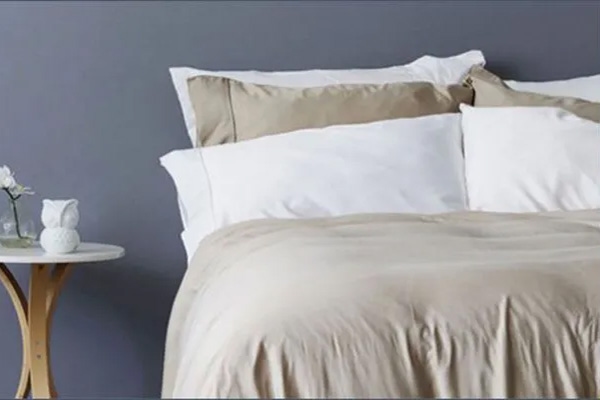So, you're looking to buy some bed sheets and you’ve heard terms like percale, sateen, Upland cotton, Egyptian cotton, Pima cotton, thread count, and weaves. What does all this mean to the average consumer? Here are some answers to your burning questions that will make your bed sheet shopping trip a little easier.
Thread Count
Thread count refers to the amount of vertical and horizontal threads of yarn per square inch of fabric. The tighter the threads are, the softer and more durable the sheet set becomes. So higher thread count is better, right? Well, not exactly. You’ve probably come across threads count between 100 to 1,000 TC. We contacted multiple leading bedding manufacturers and asked them about thread count. They all agreed it’s almost impossible to weave threading tighter than 600 TC. If that’s the case, why are there so many expensive 800 to 1,000 TC sheets? We were told that companies claiming to sell extremely high thread count sheets often use ultra-thin, low-quality, polyester blends to squeeze as many threads as possible in a given square inch. Using an ultra-thin thread to raise thread count sacrifices the durability of the product. So, it’s possible your 1000TC sheet set might last half as long as your 400TC long staple sheet. It’s important to note thread count is not an indication of quality.
Another deceptive marketing tactic some bed sheet companies engage in, are double ply, or even triple ply sheets. This happens when the textile manufacturer twists two or three threads together, allowing them to count each individual thread. So, a typical 400TC sheet could be labeled as 800TC or even 1,200TC! But it’s not going to be nearly as good quality as the 400TC single ply bed sheet.
Fabric
The most common fabric used in bedding is cotton. There are three types of cotton: Upland, Pima, and Egyptian.
Globally, 90% of cotton is derived from upland. Your 100% cotton sheets are probably made from this. Upland is a medium to long staple cotton commonly grown in the U.S. Sheet sets made from this are typically rough and inexpensive.
Pima cotton on the other hand, is a fine, long-staple cotton that yields an extremely soft weave. “Supima” may be seen on the labels of pima cotton sheet sets. Supima is an organization that certifies pima cotton sheets to verify the quality of the cotton, as well as confirming that it is grown in the United States. Less than 3% of cotton grown in the U.S meets Supima qualifications, making it cost over 2X the price of upland cotton sheets.
Egyptian cotton bedding seems to be the trend over the past few years. Like Pima cotton, Egyptian cotton is an extra-long staple cotton that produces a very soft weave. Authentic Egyptian cotton sheets can cost upwards of $250+. When shopping for Egyptian cotton sheets, it’s important to do your due-diligence. If the price is too good to be true, then it probably is. In fact, according to the “Cotton Egypt Association”, 90% of Egyptian cotton sheets are fake. DNA tests showed that only 10% of sheets labeled “Made in Egypt”, were truly Egyptian cotton. Many “Egyptian cotton” sheets are made in China or India and blended with other types of short staple cotton, then labeled “Egyptian cotton” and sold to the U.S. In 2016, retailers like Walmart, Target, J.C. Penney and Bed bath and Beyond were in hot water when their bed sheet manufacturer (Welspun) was caught selling fake Egyptian cotton sheets to their customers. It’s always important to look for the “Cotton Egypt Association” label when buying Egyptian bed sheets to ensure its authenticity.
Weaves
There are many different types of weaves, but the most desirable are percale and sateen. Percale sheets are woven one thread over and one thread under. Where as sateen sheets are commonly three threads over and one thread under. So, what does this mean? The percale weave creates a crisp, cool feel with a matte finish. This makes it breathable and feel much lighter. It’s perfect for hot sleepers and usually carried in 5-star hotels.
Sateen sheets are smoother and have a shiny finish. The weave makes it slightly more wrinkle resistant, but also heavier and less breathable. This weave is perfect for a soft, silky, winter sheet set. Types of Bed Sheet Fabrics












